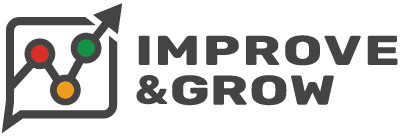When you’re selling products and services online, you have the capability to reach a much wider audience. Which is fantastic because having that far of a reach can dramatically drive your sales up.
But only if you know what you’re doing. That means understanding your audience so well you can predict their future behaviors.
It’s called audience segmentation.
As Jay Conrad Levinson once said, “Segmentation is saying something to somebody instead of saying nothing to everybody.”
So how does audience segmentation work and why should any online business start implementing this strategy immediately?
Read on.
Audience Segmentation
The typical way to understand your audience and their online shopping behaviors is to identify the following specific points about each customer.
- Age
- Gender
- Geographic Location
- Social Influence
- Device Used
While this information is definitely helpful, it can’t predict certain behaviors like why someone left a certain product in their online basket. Or whether or not that person plans on returning to the basket to buy the product.
Using audience segmentation helps break down a person’s online habits and behaviors further by looking at their past behaviors as well as their demographics behaviors.
It also allows us to utilize audience segmentation as a marketing strategy across all online platforms such as:
- Paid Advertising (PPC)
- Search Engine Optimization (SEO)
- Social Media Marketing (SMM)
- Content Marketing
It relies on thorough and well-planned strategies that understand the needs and pain points of their audience.
How Does Audience Segmentation Work?
While tracking age, gender, and geographical location can help you to predict certain behaviors, it often isn’t enough information to help you keep them engaged enough to buy from you.
You simply need more information about their habits and behaviors. Then you can accurately create a marketing funnel specifically targeted to that individual.
Here’s how you can do that using audience segmentation.
Locate the Source
How did your customer find your business? Or how did they end up on your site?
Did they:
- Read your newsletter or blog?
- Respond to a social media post?
- Do an organic search?
- Respond to a targeted marketing campaign?
Knowing how they found you will help you to understand which marketing campaign is working most effectively. You’ll now know how to redirect that flow to increase your profits.
Example: You run a 15% off discount on a social media post. By segmenting the traffic, only those who respond to the social media post will be taken to the 15% landing page. All others will simply be directed to the usual landing page.
Target the Geographical Region
Geo-targeting is hugely popular and widely used. That’s because its uses are nearly endless.
You can use geo-targeting to:
- Target a specific venue (like a stadium hosting a rock concert) where you’ll already know the customers wants and needs
- Exclude a specific area to save money knowing your audience isn’t located there
- Target an audience by time or distance. A coffee shop or restaurant would want to target nearby customers within a specific distance or walking time away from them.
- Analyze customer behavior by knowing their past locations. It will also help you understand their preferences.
Treat New and Returning Visitors Differently
Audience segmentation isn’t used with this type of targeted marketing nearly as much as it should be. Because new visitors and returning visitors are looking for two different things.
Which means your approach should differ for both types of users.
A new visitor might:
- Sign up for your newsletter
- Be enticed by a 10% off coupon to make a purchase
- Is new to your products and services
A returning visitor wants:
- To know about your new products
- A special offer only good for loyal or returning customers
- To read your latest blog article
Remember that an online customer is looking to be treated the same as they would if they walked into your physical store. A new customer wants guidance on where to find your products. A returning customer wants to know you recognize them and appreciate them coming back.
Understand Day Versus Night Behaviors
While it might surprise you, audience segmentation includes a customer’s behavior during the day versus the night. Because their behaviors change according to the time of day and to maximize your profits, your marketing strategy should change.
Typically day visitors:
- Are working or running errands
- They’re busy and distracted
- Are looking to be educated rather than entertained
So your marketing should be direct and information should be quick and easy to understand.
While evening visitors:
- Tend to be more relaxed
- Have more time to spend online
- Want to be entertained and distracted
A fun video or other visual is a great way to get and keep their attention.
Device Usage: Desktop Versus Mobile
It might seem weird that audience segmentation is used to determine the behaviors of mobile users versus desktop users. However, the behaviors are vastly different between users.
77% of the American public now owns a cell phone and half of us own a tablet.
But did you also know that:
- We spend 59% of our time on our mobile phones but only spend 41% on our desktops?
- Currently, we are only spending 15% of our dollars on mobile purchases while spending a whopping 85% of our money using our desktop?
What this means is that there’s a lot of money being left on the table because audience segmentation isn’t being used properly when it comes to targeting mobile phone users.
It may also help you determine what changes you need to make to your website to better appeal to your audience.
Here are a few things that need to differ when targeting a cell phone user versus a desktop user:
- Visuals: Most visuals that work great for a desktop user fail to work in a mobile setting
- Style of Content: The easier it is for a mobile user to read your content, the more likely they will be to buy an item
- Security and Connectivity: Security and spotty Wi-Fi makes it more difficult for a mobile user to shop online successfully and confidently
Often, implementing an easy, one-click option to your mobile phone users is enough to entice them to start shopping.
What Are Some Principles of Audience Segmentation?
Implementing audience segmentation into your marketing strategy makes it easier for both you, your business, and your customers to successfully engage with one another.
It’s a way to widen your communication channels with one another. Something that up until now, has been difficult with online marketing because it has eliminated the benefits of a face to face meeting.
However, using the following principles, it enables a company to treat a customer as though they know each other personally.
Here’s how:
Exclusivity
Everyone loves to think they’re being offered something no one else is. It makes us feel special. The offer should be special enough to draw attention to itself so that other, more generic messages are ignored.
Responsive Action
A targeted message that is in response to the action the customer is currently taking.
In other words, a customer clicks on your blog. A pop up then prompts them to sign up for your monthly newsletter. It’s a targeted action that is more likely to get them to take action.
Rewarding Experiences
Your goal is to get customers to explore as much of your website as possible. After all, they’ll be much more likely to buy more items.
By rewarding their actions through a time-sensitive offer, it offers the customer a reason to take action now instead of coming back at a later time.
Audience Segmentation and Conversions
Of course, none of this matters if you can’t entice your customers to buy from you.
58.6% of online shoppers have left products in their online shoppings carts. Why? Because they weren’t ready to buy. But that doesn’t mean you can’t do something about cart abandonment rates.
Here are a few ways audience segmentation helps reduce cart abandonment rates:
Identifying Purchase Intent
People are fickle. Especially when they shop online and think no one can see them.
That doesn’t mean you can’t use audience segmentation to separate those who intend to actually buy and those who are just browsing. You can then target those customers you’ve identified as serious shoppers.
Upselling
Getting a customer to purchase more items by offering larger incentives for higher minimum purchase thresholds.
Push to Close
Identifies those customers who are about to abandon their cart and brings an offer to the customer’s attention. The offer is something they already qualify for, but may be unaware of.
Identifying New Customers
Providing a one-time only, aggressive offer to a new customer is a great way to make a sale.
Identifying Loyal Customers
Using audience segmentation to identify and reward loyal customers gets them to come back. It automatically retrieves information on how much money the loyal customer has already spent with you.
Based on their shopping history, you can then entice and reward returning loyal customers with discounts, loyalty rewards, and offers and information about similar products your company sells.
Complimentary Product
Using the customer’s past history and current shopping cart information, a company offers a discount on a similar product.
Audience segmentation is just one part of the online marketing services we provide to our customers. Our goals are to help you reach your target audience, engage them with great content, convert them to loyal customers.
Our process begins with a free, 1-hour discovery call. Contact us today to find out how you can improve your online marketing ROI.



